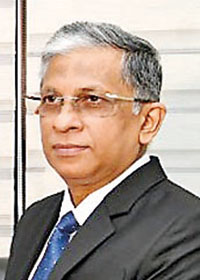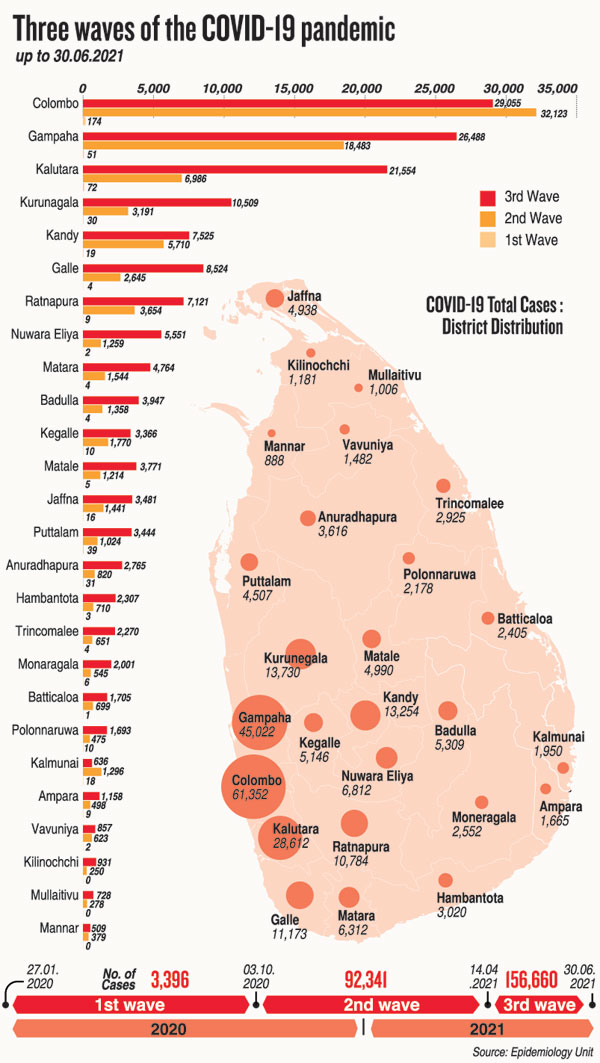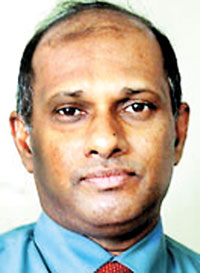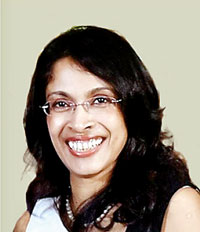News
Overcoming COVID-19 in the comfort of one’s home

Dr. Asela Gunawardena
The long-awaited home-isolation and management of asymptomatic (without symptoms) or mildly symptomatic COVID-19 positive patients has become a reality in the Western Province.
The strong network established to ensure the safety of these patients includes:
The Medical Officers of Health (MOH) and Public Health Inspectors (PHIs).
The ‘Patient Home Isolation and Management System’ (PHIMS) which will have the case and clinical histories of patients.
An active Call Centre (Hotline: 1390), the link between the patients and the medical team.
Specially-trained medical teams comprising Medical Officers, Specialist Family Physicians and on-call Consultants in other specialities for each district, who will be in tele-consultation with the patient.
The Regional Epidemiologists.
While drastically cutting down the huge expense and logistical nightmare of arranging transport to and facilities at distant intermediate care centres (ICCs), ‘The Integrated Home-based Isolation and Management’ System will help these patients to get the best of medical management in the comfort of their homes, the Sunday Times learns.
This is the brainchild of the Director-General (DG) of Health Services, Dr. Asela Gunawardena, supported by the DDG (Medical Services I) Dr. Lal Panapitiya and senior ministry officials.
Home-based care programmes are being followed in many countries and the World Health Organization (WHO) also recommends it, it is understood.
“Three members of the same family, father, mother and daughter, in Panadura were positive. All were asymptomatic but after studying their case histories, we found that the mother had undergone bypass surgery several years ago and was also a diabetic,” says Consultant Family Physician Dr. Malkanthi Galhena, a livewire behind this programme.
She points out that while the father and daughter were managed at home, even though the mother wanted to stay home under this programme, they explained matters to her that she was vulnerable to progression into severe disease and persuaded her to go to hospital.
Stressing that the management of each and every patient would be done on a case-by-case basis, Dr. Galhena who is the President of the Sri Lanka Association of Specialist Family Physicians, turns the spotlight on how the programme will work at ground level.
She explains that when a person tests positive, they would keep a close eye on them in the first week to try and prevent them from going into severe disease. With such close monitoring and advice, any early sign of progression into severe disease would be picked up and the person taken to hospital immediately.
Usually, 80% of infections are asymptomatic or mildly symptomatic and only 20% are otherwise (symptomatic) of which only about 5% need ICU treatment.
The danger, however, is that even an asymptomatic or mildly symptomatic person could go into severe disease, says Dr. Galhena, adding that it would depend on the person’s immunity and underlying conditions.
Those eligible for home management under strict selection criteria are:
Anyone above 2 years and under 60 years of age, without any other medical conditions.
Women who are not pregnant.
Those without any chronic co-morbidities such as morbid obesity (BMI >30), diabetes, hypertension, chronic heart/ lung/renal diseases or well-controlled other medical conditions.
Those not suffering from immune-compromised status or not on long-term immune-suppression therapy.
Those who have a separate well-ventilated room with adequate washroom facilities, etc.
Adequate self-care or caregiver support at home.
Individuals with proper communication facilities and ability to communicate (patient or caregiver).
Dr. Galhena points out that this system will help take away the burden on hospitals – staff as well as facilities and capacity, while also allowing patients to be in their homes comfortably under proper medical supervision. The authorities would also be able to save funds for other urgent COVID-19 work.
The steps being followed are:
When the MOH gets a report that the RT-PCR test of a person in the area is positive, the MOH/PHI will trace him/her, visit that person’s home and carry out an initial assessment (triage) whether the person is asymptomatic, mildly symptomatic or symptomatic. If the person is symptomatic, he/she will be taken to hospital.
In the case of those who are asymptomatic/mildly symptomatic, the MOH/PHI will assess whether he/she has enough room in the house, a separate toilet and also the awareness to isolate himself/herself.
The next step will be for the MOH/PHI to alert the relevant medical teams about the home-based isolation of that person.
Immediately, the details of the patient (clinical records) being monitored at home, would be computerized and he/she would be linked to the Call Centre.
Thereafter, the medical team will call the patient daily or even many times a day to keep a close tab on any progressive symptoms, while also advising him/her on the need to rest, proper fluid management, control of co-morbidities by taking necessary medication and other non-pharmacological methods and having a well-balanced nutritional diet.
The home-based patient too would have access to the medical team throughout the day and night, when needed.
The telephone consultations will continue and if there is the slightest indication of severe disease (shortness of breath when walking or talking, etc.), the patient would be moved to a hospital to screen for oxygen saturation or any other organ failure coordinated by the Regional Epidemiologist.
Once a patient completes 14 days without symptoms, he/she would be discharged from the programme, armed with advice on how to be alert for any symptoms of Post-COVID-19 Syndrome which can flare up and what prompt measures to take such as informing the MOH/PHI.
When asked how delays in RT-PCR testing would impact on the programme, Dr. Galhena said that if there is a person with symptoms of fever, body aches, etc., the day of their onset would be taken as the first day of the infection. If a random RT-PCR detects an infection, the day the results come, would be taken as the first day. By that time, a few days may have passed, but it wouldn’t have gone into the second week.

| 748 ‘discharged’ from home in Kalutara & Colombo ‘The Integrated Home-based Isolation and Management’ System has been launched in the Kalutara district on June 7 and the Colombo district on June 25. So far, 1,125 infected persons have been part of the programme, with 748 being discharged after recovery and 73 being admitted to hospital. There have been no deaths. Seventy-six Medical Officers are looking after these patients in the Kalutara district and 96 in the Colombo district. Both districts have a total of 53 Consultants overseeing patient management. Appreciating numerous people who helped the ministry to implement this programme, Dr. Malkanthi Galhena says that they got the unstinting support of the Government Medical Officers’ Association (GMOA) headed by Dr. Anuruddha Padeniya, while the Bank of Ceylon and Dialog are supporting the IT system and the Call Centre.
 Dr. Rajiva de Silva Immunologist on what to ‘mix and match’ With mixing and matching seeming to be an option for nearly 600,000 people who have got the first dose of AstraZeneca, the Sunday Times asked Consultant Immunologist Dr. Rajiva de Silva of the Medical Research Institute for his views. Quoting a placebo-controlled study done in the United Kingdom, Dr. de Silva said that a mix of AstraZeneca and Pfizer vaccines had found a mild increase in the side-effects such as fever and malaise after the second dose. “There was nothing serious. Those who had got this ‘mixed’ jab just stayed home from work for a day,” he said, while a small observational study in Spain on the effectiveness of a mix of AstraZeneca and Pfizer, as the first and second doses respectively, had shown it to be “immunogenic”. Commenting as an immunologist, Dr. de Silva said that mixing mRNA (Pfizer) and adenovirus (AstraZeneca) vaccines would “broaden” the immune response. The AstraZeneca vaccine’s good T-cell response would be complemented by the Pfizer vaccine’s good antibody response, he said, reiterating that if these two vaccines are mixed and matched it would broaden the immune response. Vaccines received by Sri Lanka: January 28 – 500,000 doses of AstraZeneca COVISHIELD (donation from India) February 25 – 500,000 doses of AstraZeneca COVISHIELD (bought from India) March 7 – 264,000 doses of AstraZeneca COVISHIELD (from COVAX, the global vaccine initiative) March 20 – 600,000 doses of Sinopharm (donation from China) May 4 – 15,000 doses of Sputnik V (bought from Russia) May 26 – 500,000 doses of Sinopharm (donation from China) May 27 – 50,000 doses of Sputnik V (bought from Russia) June 9 – 1 million doses of Sinopharm (bought from China) June 11 – 65,000 doses of Sputnik V (bought from Russia). These were second doses of Ad 5 July 2 – 1 million Sinopharm (bought from China) Vaccines likely to arrive in Sri Lanka shortly: Around 3 million doses of Sinopharm in July and another 4m in August Around 1m doses of Moderna through COVAX within a week (with a possibility of 2m more from benevolent countries) 264,000 doses of AstraZeneca through COVAX Three tranches of 27,000 doses each on a weekly basis from Pfizer in July A promise of 1.5 million Sputnik V doses Top technical committee gives nod to matching AZ with Pfizer or Moderna The Health Ministry’s National Advisory Committee on Communicable Diseases (NACCD) has given the nod to mixing and matching of AstraZeneca (AZ) with Moderna or Pfizer, the Sunday Times understands. The National Medicines Regulatory Authority (NMRA) is likely to grant emergency-use listing for Moderna as it has not only got EUL from the WHO but also from ‘stringent’ drug regulatory authorities in several countries, it is learnt.  Dr. Hasitha Attanayake ‘COVID-19 Saviours’ Three Sri Lankan doctors were recognized as ‘COVID-19 Saviours’ on Doctors’ Day on Friday by the India Chapter of the American College of Physicians. They were National Institute of Infectious Diseases (NIID or IDH) Director Dr. Hasitha Attanayake and Senior Consultant Physician Dr. Ananda Wijewickrama and Head of the Department of Immunology and Molecular Medicine, University of Sri Jayewardenepura, Prof. Neelika Malavige whose laboratory is the only one in Sri Lanka which conducts genetic sequencing. Explaining that the NIID is the National Focal Point for COVID-19, Dr. Attanayake explained to the eminent gathering on Zoom that so far the NIID has treated more than 5,000 COVID-19 patients including the very first patient. The challenge is the “dynamic” nature of the virus which results in procedural changes day by day, he added.
 Dr. Ananda Wijewickrama
 Prof. Neelika Malavige | |

